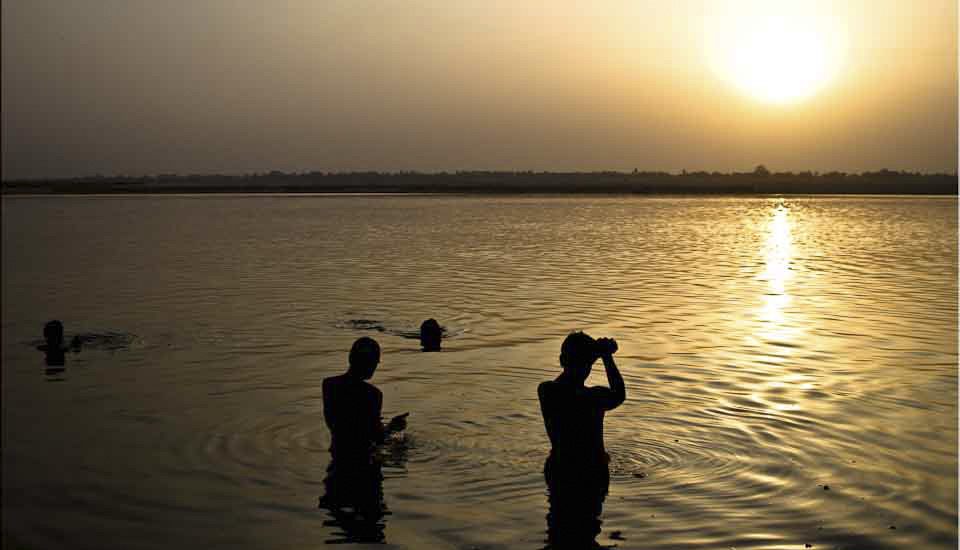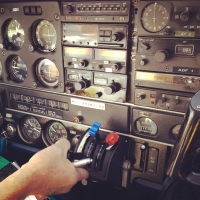.jpg)
Dorze Woman
The Dorze people are one of over 80 different ethnic groups in Ethiopia. Many of the roughly 30,000 Omotic-speaking members of this group live in southern Ethiopia – in the region of Arba Minch.
‘Toto, I’ve a feeling we’re not in Kansas anymore.’
This sense of dislocation – in a positive way – often arises when travelling off the beaten track. In Southern Ethiopia, I was so far off the popular routes that most of the ‘highways’ I was on weren’t paved!
Around the city of Arba Minch – which sits about 500 kilometres south of Addis Ababa – the mountains are dotted with Dorze villages, and the passes are full of cows. The Dorze people live in distinctive beehive-shaped woven bamboo huts. For the most part, life there continues much as it has for hundreds of years, with people spinning and weaving their cotton by hand, herding their cattle, cooking flat bread on the fire, and making liquor from the flesh of the false banana tree. In the absence of electricity, laundry is still done in a tub or in the closest running stream.
In spite of their small numbers, the Dorze have learned how to preserve their culture by packaging it for tourist consumption. By hosting ‘village visits’, they give visitors a little taste of their traditional life, while at the same time generating income and passing skills and stories down to the next generation.
I was in Ethiopia on a small-group Piper Mackay Photo-Tour led by photographer Ben McRae. Together with local guide Danny from Grand Holidays Ethiopia Tours, we flew from Addis Ababa to Arba Minch on our way to the Omo Valley; the visit to a Dorze village was to be our first tribal cultural contact.
.jpg)
Ethiopian Airlines Bombardier Dash 8
Arba Minch is a short flight (or very long drive!) south of Addis Abiba. (iPhone6)
.jpg)
View over my Balcony
The view from my little hut at the aptly-named Paradise Lodge was quite idyllic.

Small Bills Bundled
We are definitely ‘not in Kansas‘! The tour organisers provided us all with an envelope stuffed with Ethiopian Birr in small notes. Many, many years ago, the tribal groups in the Omo Valley learned to monetise their unique appearance. All photos (and this includes not just portraits, but houses, fences, goats and cattle, etc.) are on a fee-for-click basis. Fortunately for me, a bundle of 100 5 ETB worked out to about $AUD5! (iPhone6)

Dusty Roadway
After lunch in the open air, overlooking the mountains and the Rift-Valley lakes, we climb higher into the hills to find our Dorze Village.

Dorze Village
These unique elephant-shaped Dorze houses are reputed to be inspired by the beasts who once roamed freely across this region. The huts start out very tall: up to 12 metres of woven bamboo on a wooden frame, with two hooded air holes resembling eyes near the top. When the ubiquitous termites attack the base, the house is lifted, shaved off at the bottom, and moved. So, although the homes can last 60 to 80 years, they get shorter over time.

Hand-Spinning Cotton
The Dorze are known for their fine hand-made cotton products, with the women spinning and the men doing the weaving. It is thought that weaving was not indigenous, but was actually introduced from the north.

Dorze Woman

Stripping Greens
The leaf of the false banana tree has a multitude of uses. Shredding the leaves, as this young woman is doing, creates fibre for rope and pulp for a flat-bread base or for fermenting into liquor.

Shredding Banana Leaf
The ensete ventricosum, or false banana tree, is so widely grown and used here that it is commonly known as the Ethiopian banana. I was just as fascinated by this young woman’s long braids!

Dorza Man with a Tray
Kocho (unleavened bread) is made from the starchy false banana rhizome and the flesh of its leaves.

Dorze Woman in the Smoke
Cooking is all done over small fires; the courtyard is smoky and hazardous to anyone with asthma!

Dorze Woman

Drivers Gathering
The drivers have heard it all before! They head straight out to the snack table at the back.

Dark Eyes and Curly Hair
Those cork-screw curls look so soft and shiny – it was hard to resist reaching out to touch them!

Woman in a Headscarf
There was a selection of woven goods for sale (as well as beads and carvings). Naturally, I added to my scarf collection.

Doing Laundry
In the absence of electricity and running water, all tasks take longer!

Kid in a Tree
Inside the compound under the watchful eyes of their elders, the children were very well behaved. Outside the fence, however it was a free-for-all.

Young Child
In no time at all, I was surrounded by adorable little people, begging and trying to sell me things.

Landscape
We are a long way above Arba Minch – which sits at 1,285 metres. We pause on our way back down to the city to look out over the landscape.

Cows in the Road
Of course, we have to stop to give way to the cattle anyway!

Young Girl
Youngsters, well versed in the art of posing for photos, appear out of nowhere.

Young Girl

Old Woman with a Load
While we are stopped, a number of women of all ages are trudging up the hill, …

Young Woman with a Load
… almost doubled-over by the large loads of wood they are carrying, but still smiling.

Carrying the Wood

Young Woman on the Road
 It was a wonderful first day in the tribal villages, and I still had plenty of small notes left for the rest of Omo Valley.
It was a wonderful first day in the tribal villages, and I still had plenty of small notes left for the rest of Omo Valley.
Until next time –
Happy Wandering!
Photos: 15October2018






























.png)


[…] the Great Rift Valley from Addis Ababa some days before, and had visited the Dorze people (see: Roadside and Village Portraits) before overnighting in Arba Minch. From there, we enjoyed the scenic drive south into the […]